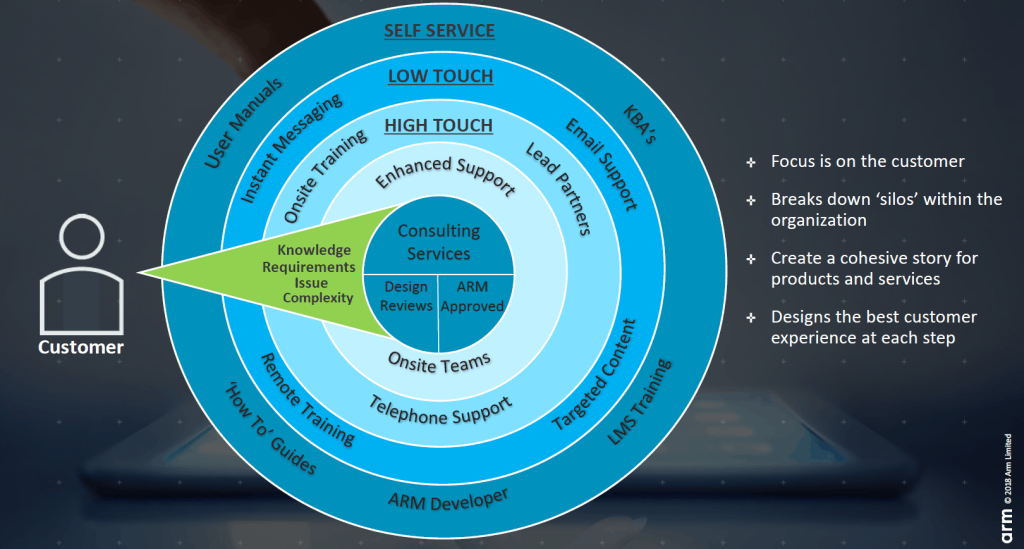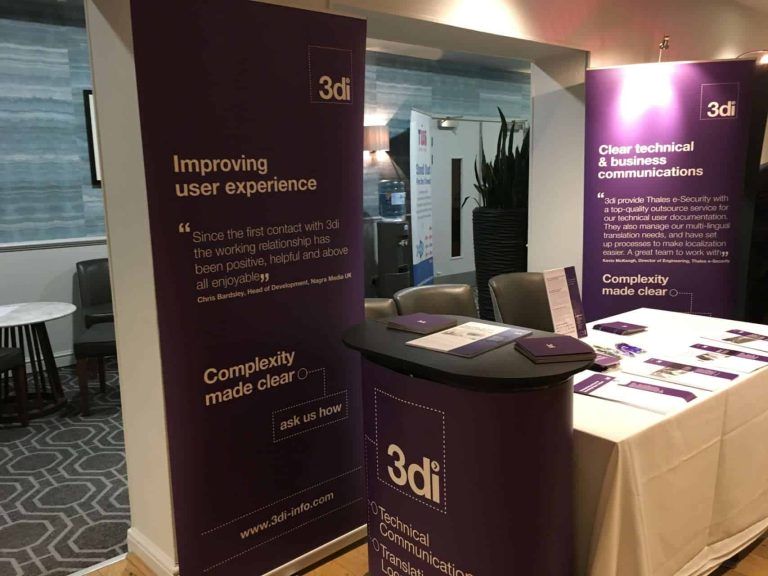The TCUK 2018 conference’s theme was ‘The pursuit of a polymath’. In keeping with the theme, the conference had a variety of workshops and keynotes covering everything from using different tools, such as Git(hub) to create and publish your content to discussing concepts used to write and structure technical content such as DITA.
The venue

De Vere Staverton Estate Lounge
The conference took place at the De Vere Staverton Estate in Northamptonshire. It was the perfect place to hold a conference, as you could relax in the peace and quiet of the surrounding area after taking in so much information. There was a gym and swimming pool which people took advantage of in the evenings. Some people visited a local pub on the first night.
What is a polymath in the context of technical communications?
A polymath is a person of wide knowledge or learning. In technical communications, it is becoming important to be a polymath. Even if you only perform one task in the process of technical communications, you must know how other aspects of technical communications function to work more effectively and to produce the best documentation you can.
Technical communicators are expected to know a variety of authoring tools and to understand different concepts, from medical equipment to software engineering. This makes us more flexible when approaching work and allows us to work within different industries.
Being a polymath in technical authoring also means knowing different aspects of technical communications. We are not only document writers; we are expected to know how to create graphics that go into our documents, and how to conduct interviews so we can best capture the information subject matter experts give us.
The sessions
Some of the topics covered at the conference were concepts that we already know of. Processes such as content creation, structure and layout, and publishing were all discussed in the sessions. However, there was an emphasis on bringing new ideas and approaches to these processes.
The format of the conference allowed for freedom because you could choose from over 40 sessions based on your interests and I think I picked good topics because they started lively discussions on the 3di internal chat. A few ideas have been put forward on how we can implement some of the new ideas learnt from the sessions into our projects.
From the workshops that I personally attended, there were two distinct types:
- tools to publish content
- concepts used to write and structure content
There were workshops discussing other aspects of technical communications including turning technical content into marketing content and improving user experience through technical writing.
Using unconventional tools for publishing technical content
Robert Kratky, a Principal Technical Writer at Red Hat led a workshop on how to publish documents using Git(hub) and continuous integration tools, nullifying the need for servers.
Phil Lane’s talk demonstrated creating mobile apps to use as outputs for your content. As technical authors, it is common to release outputs such as PDFs, help files, or HTML but this session taught us that using the Apache Cordova Open Source framework, we can release content by creating mobile apps and populating the apps with our technical documentation.
Phil made the process look easy and the app he created in a few minutes worked seamlessly. Phil gave us a seven-step process for creating mobile apps. The seven steps are:
- Create the project
- Add platforms
- Test environment
- Customise content
- Add branding
- Build and test your app
- Publish to app stores
Using digital realities in technical communications
Over the three days of the conference, there were plenty of other workshops that focused on the use of tools for outputting content.
One very memorable workshop was led by Toni Byrd Resaire on creating chatbot conversations. She showed us that you only need 4 things to create a good chatbot conversation. The four things are:
- Persona
- Context
- Molecular content
- Platform to run your chatbot
Andrew Mills, an information developer for ARM, held a workshop on how we could use virtual reality, augmented reality and mixed reality in technical communications to give users a new, emotive, engaging and memorable context for understanding information.
Andrew talked about how the use of virtual reality, augmented reality and mixed reality can aid educational content. This is already the case within certain industries, e.g. aircraft technicians can use mixed reality to learn how to perform maintenance tasks. This helps reduce costs associated with training facilities and, indirectly, technicians.
Discussing concepts used to write content
The second day started off with a keynote about being an introverted leader. The presentation was very insightful and had information that can be applied to extroverted people too. Some of the main points which I think translate to extroverts are; controlling your environment and understanding how you communicate best.
Simplified Technical English (STE) always splits opinions and Mike Unwalla’s talk was no different. Mike’s presentation on STE sparked debate as some people in the audience disagreed about its usefulness whilst others liked STE and use it in their documents.
I personally enjoyed the debate as I learnt much more than if it had been a regular presentation. Some workshops work better when delivered in a debate format as this facilitates deeper understanding of the advantages and disadvantages of using the ideas being presented.
Is text always best?
As authors, we tend to only think of conveying information through text but there was a workshop which reminded us that content is not always text-based. We can use text, images and videos in technical communication.
The workshop, led by Ferry Vermeulen, showed that technical information can be presented in a fun and memorable way, provided the core message is not diminished.
Ferry showed us a great example of implementing video in this Virgin Atlantic safety video, https://www.youtube.com/watch?v=DtyfiPIHsIg.
Structuring content
A few of the sessions were themed around structuring content.
Shirley McDonnell, a senior information developer with Technically Write IT (TWi), shared a system for maintaining a DITA structure when creating content. The system was developed as a guide for subject matter experts who don’t usually write content. It can be useful for people learning how to use DITA for the first time.
Daniele Procida led a very engaging presentation on the four functions of documentation in structuring content. Daniele is a software programmer who is interested in documentation.
He developed the four functions of documentation to help software writers create their content. The functions are very similar to the different topics in DITA. The similarities are:
- Tutorials relate to Task Topics
- How-to guides relate to Task Topics
- Explanations relate to Concept Topics
- References relate to Reference Topics
Using the four functions of documentation structuring content, you could write a manual to teach someone how to play chess. Daniele reminded us that not structuring your content will make your documents “worse than useless”, and this will make the reader feel like they are “trying to push water up a hill”.
The keynote at the end of the second day was on creating great customer experience through technical support and content. It showed a new way of working developed by ARM’s customer support team that includes technical communicators at every stage of the support.

Slide from Ciaran Dunne’s “Creating great customer experiences” presentation
The image shows how ARM are using content created by technical communicators at every level of their customer support workflow.
Networking
Welcome to the 3di booth

There were plenty of opportunities to meet other people in the industry, to discuss the workshops we had attended as well as potential work collaborations in the future.
We also had the opportunity to talk to the leaders of the workshops to find out what drew them to the subjects they were talking about in their presentations.
Gala Dinner
The Gala dinner celebrated the 70th anniversary of the ISTC, and the 50th anniversary of Communicator magazine. There were awards given to people who have had an impact on the technical communications industry.
So how do I become a polymath?
A polymath in technical authoring was illustrated brilliantly by one of the workshops, which was about using mobile apps to publish technical content. Breaking down modular content into molecular content, you can re-use your content in many more ways such as conversational content for chatbots or use the content to form a much more interactive user experience such as the system developed by ARM.
Become a polymath by learning about new developments in your field and the fields that work in relation to yours. You need to diversify your skills, keep up with technology trends and see if you can implement some aspects into your workflow.
If you’d like to stay on top of other events and industry news visit our blog by clicking on this link.
